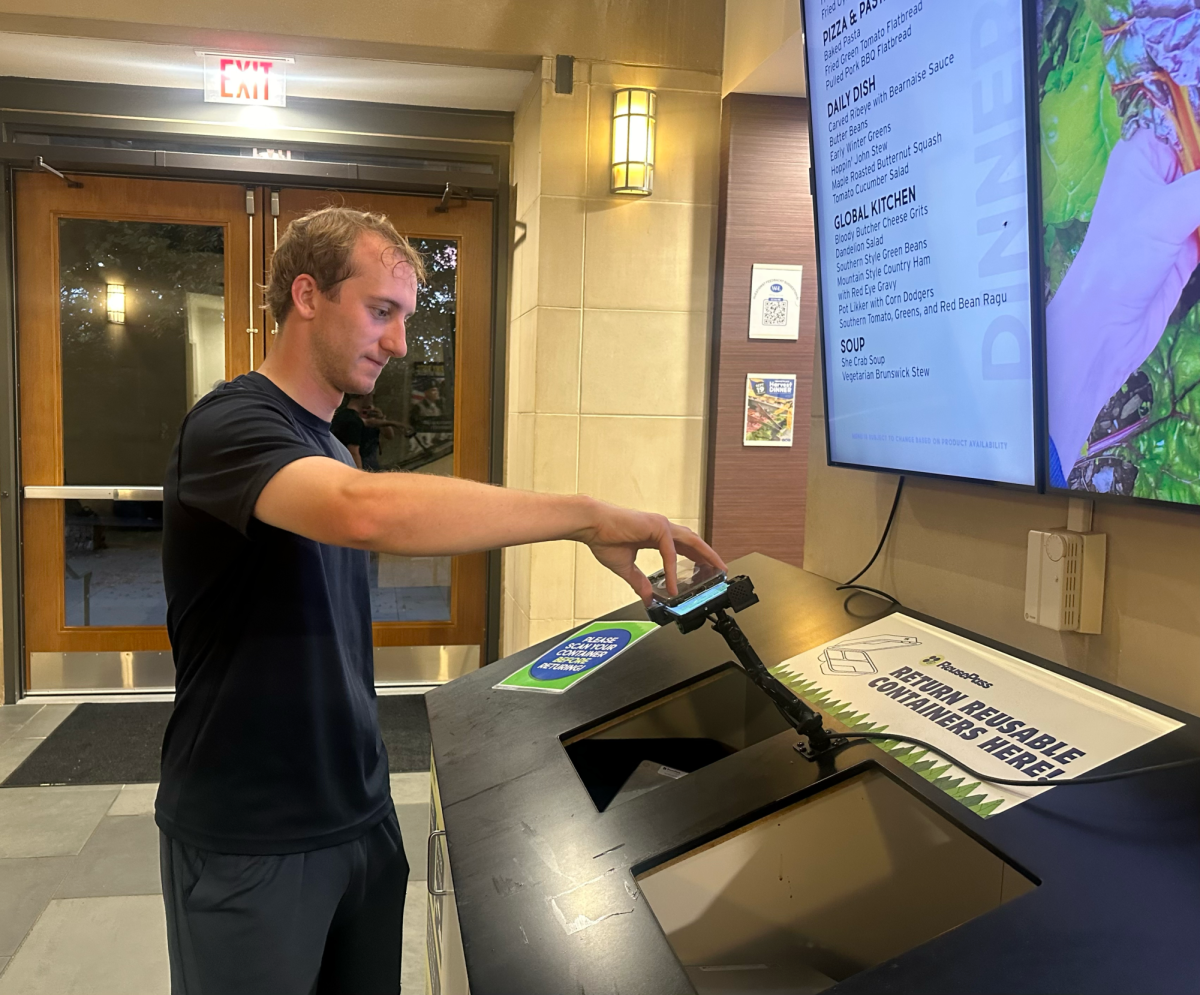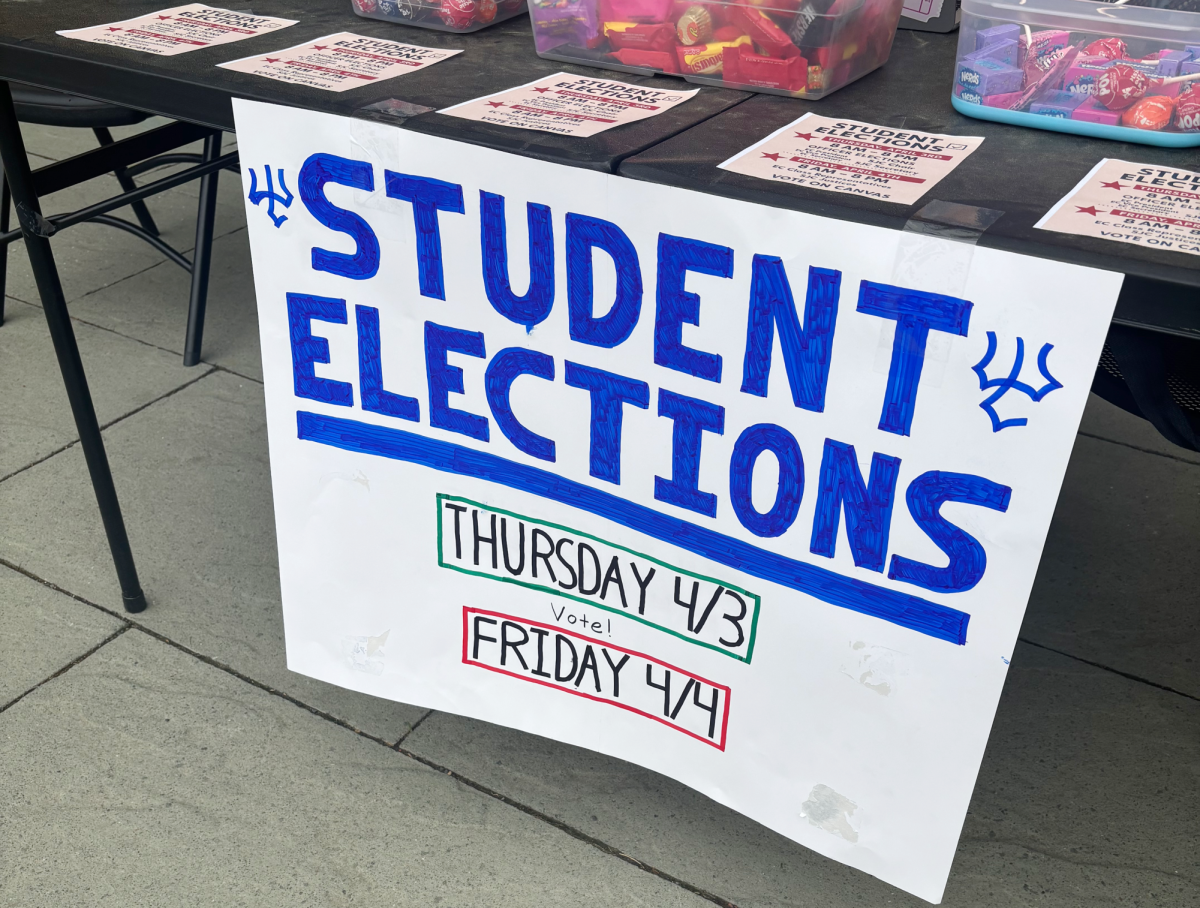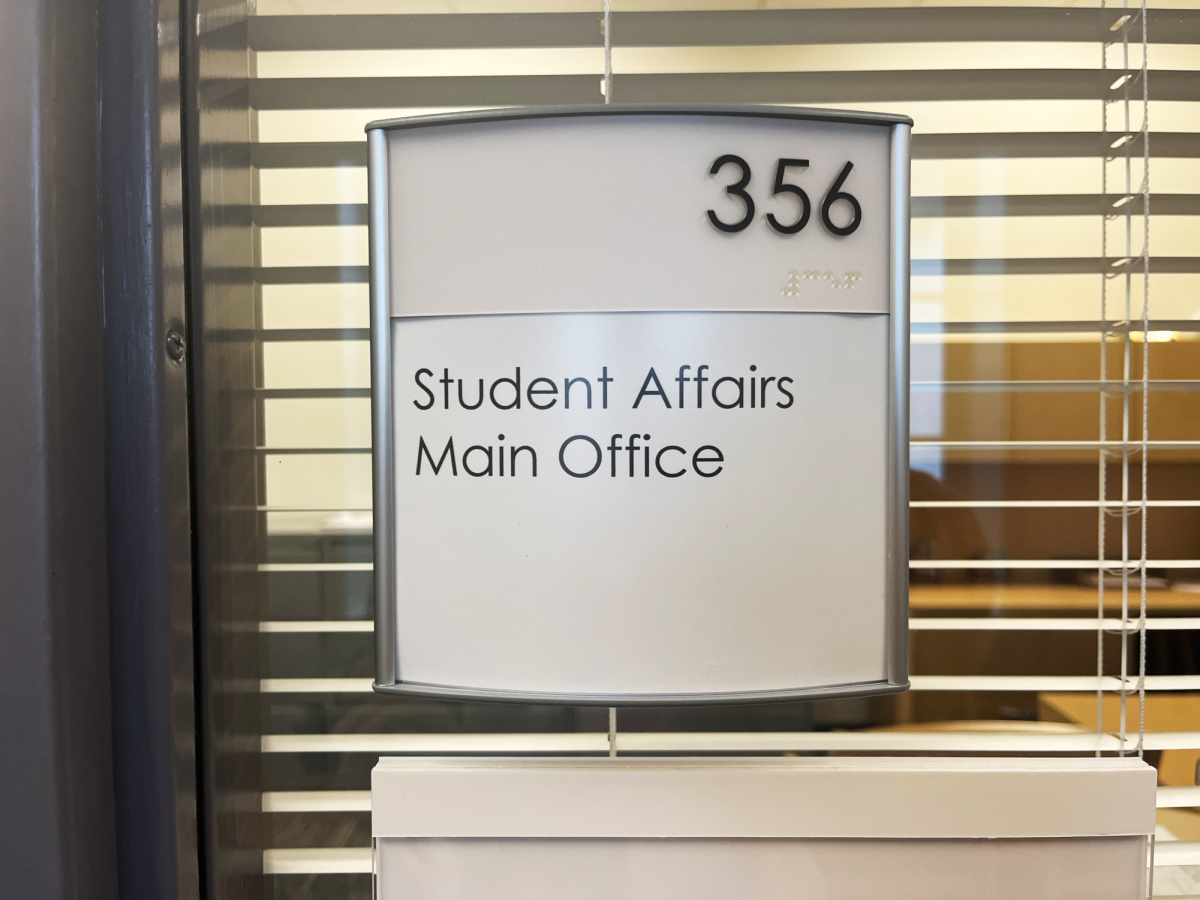The Marketplace is providing reusable to-go boxes to students this year instead of the compostable ones used in past years. University officials cite the change as a sustainability effort, but students are skeptical of the program’s environmental impacts and are frustrated by lost convenience.
Alvin Wheeler, the director of dining services, says staff members are working to educate people on the program’s purpose.
“Whenever people hear ‘change,’ it’s always met with a little bit of resistance,” Wheeler said. “At the launch of the program, we were met with a little bit of pushback.”
Students started a petition on Sept. 18 to restore the university’s compostable to-go boxes and minimum meal plan options. As of Sept. 22, it had 345 signatures, according to the change.org petition platform.
Caroline Cruze, ’25, said the system “doesn’t make sense” because the old to-go boxes were compostable and the new system’s reusable boxes are plastic, which seems less environmentally friendly.
Wheeler said the new program creates less waste. D-hall previously generated 30,000 pounds of trash each year, he said, some of which was compostable boxes that had not been disposed of and processed properly.
The new containers have a 100-cycle lifespan, Wheeler said. That means they will eventually be recycled, and new ones will need to be manufactured.
Dining services uses an app called “ReusePass” to connect reusable containers to student accounts through QR codes. Containers must be returned within three days, according to the app, but there is a seven-day grace period before students are charged $10.
So far this year, 90% of the reusable containers were returned within four days, Wheeler said.
Last year, d-hall had compostable to-go boxes and over 500 students took to-go boxes per day, said K.C. Schaefer, the executive director of auxiliary services. Only 150 students utilized the to-go box program on this year’s busiest day.
“We have seen fewer people taking to-go meals from the Marketplace,” Schaefer said. “While that’s not the primary goal, I’d say it’s a secondary goal.”
However, students said they do not see the point of a to-go box program if the goal is for students to always eat in the dining hall.
“They’re just eliminating convenience for students and pocketing cash at the same time for the ‘late returns,’ which legitimately have zero effect on them,” said Cruze.
The new boxes are made of polypropylene, which is considered the safest of all plastics that are used for food contact surfaces, Wheeler said.
But some students said they are concerned about the cleanliness of the boxes.
“These plastic boxes will ultimately and eventually need to be replaced due to wear and tear, staining and bacteria growth,” Cruze said. “Plus, it’s kind of nasty.”
With the new kitchen renovations, dining services purchased a new conveyor-style dish machine that uses less water and has a lower electrical output to continue their sustainability efforts, Wheeler said.
“This machine reaches temperatures of 180 degrees which kills any bacteria, in conjunction with a food grade dish detergent we use that is pumped into the machine as well,” Wheeler said. “If we receive a box that is still full of food, that food is then composted and then rinsed out before going into our dish machine.”
During the pandemic, the university was under CDC regulations and had to allow more single-use containers, Wheeler said. Before that, d-hall had a reusable to-go box program in place.
“This is a reset to how it was always intended to be,” said Jan Stewart, the director of sustainability. “Marketplace was meant to be a place for people to come, sit down, and have a meal.”
Schaefer says the old system didn’t hold people accountable for throwing food and to-go boxes in the trash, but the new system eliminates waste.
Students said they worry that the waste is now simply becoming someone else’s responsibility.
“I think it’s unfair that dining services employees have to deal with containers that have been sitting out with rotting food in them for multiple days,” Cruze said. “It’s a health hazard.”
Editors’ note: Cate Cox, ’28, contributed to the reporting of this story.










